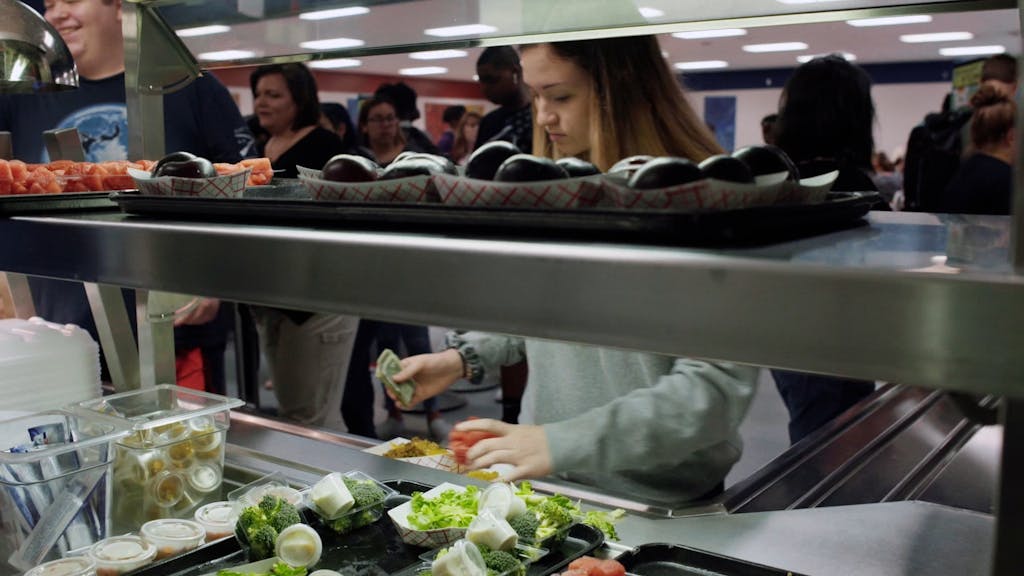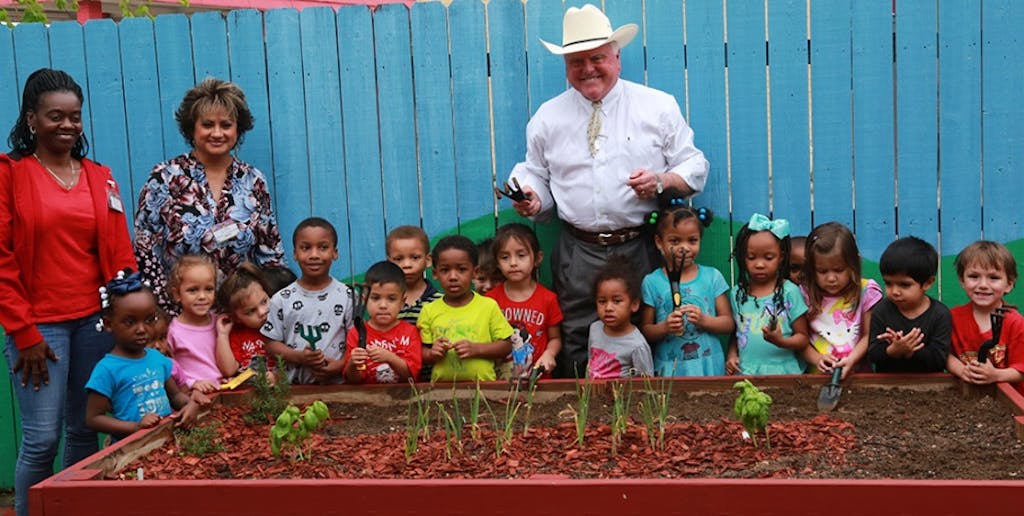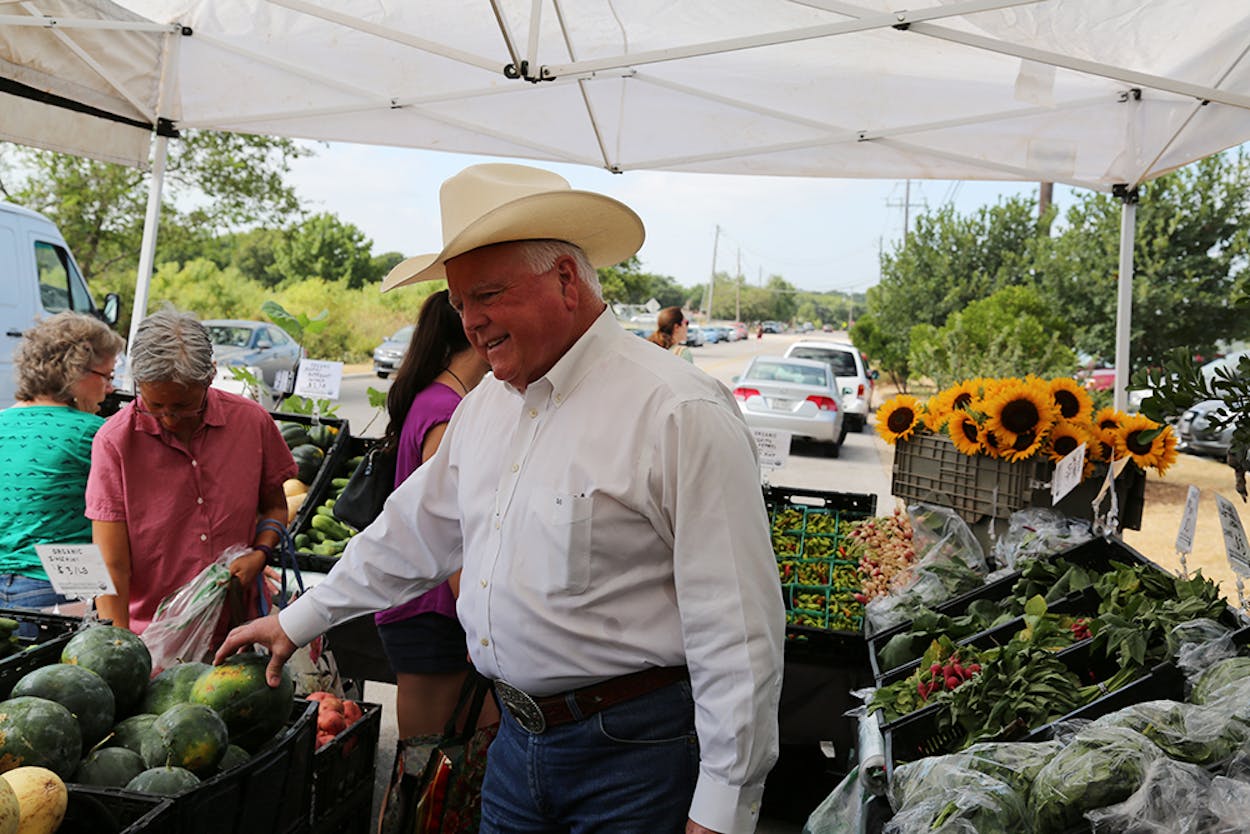How long have you worked with TDA and why did you get involved with the Farm Fresh program?
SM: “When I took over as Texas Agriculture Commissioner in 2015, I was determined to get healthy Texas produce into our Texas schools. That’s why I initiated the Farm Fresh Initiative. That opened the door for a lot of expansion, making it something that goes beyond the National School Lunch Program ad has been a great success for students, schools and ag producers.”
What is your role within the Farm Fresh program?
SM: “As Agriculture Commissioner, I lead TDA’s Food and Nutrition Division, which has been given the mission to look for all the ways we can develop the Farm Fresh Initiative. I want it to reach as many Texas children as possible and keep it growing. Texas has become a national leader in connecting agricultural producers with federal nutrition programs.”
Where have you been able to see the most benefit through this program?
SM: “The Farm Fresh Challenge has introduced millions of Texas children to foods they had never encountered like kale or spinach from Texas’ Winter Garden Region – or foods they shied away from like apples from the Texas panhandle or grapefruit from the Rio Grande Valley.”

How receptive have children been to the introduction of fresh alternatives to their school meals?
SM: “When I visit a school or childcare center during the challenge and those kids show me what they ate in a taste testing or take me to see their school garden, I know that’s something they wouldn’t be so excited about if we weren’t showing them how to appreciate healthy foods. That ranks up there as one of the things I’m most proud of in my work as Agriculture Commissioner.”
How are farmers and ranchers selected for Farm Fresh and what qualifies their produce for the program?
SM: “Deciding which foods show up on kids’ plates is a local decision, The Farm Fresh Initiative builds the relationships that schools and childcare centers need to make kids homegrown and healthy. More than 175 Farmers and ranchers have joined my Farm Fresh Network to help schools find out who sells local products. And we want kids to see the hardworking people tending the flocks and herds and plowing the fields for the foods they thought just came from the grocery store.”
What collaboration are you most proud of?
SM: “The Farm Fresh Challenge for schools remains the big hoss of Farm Fresh events with thousands of Texas schools participating every October. We expanded the challenge to include the Child and Adult Care Food Program and the Summer Meal Programs. TDA provides resources they need to teach local, eat local and be social. Interest in the challenge continues to grow thanks to social media and positive feedback from both students, parents and teachers, Through our TDA efforts, we’re seeing a growing awareness of the value of eating local.”
Apart from the nutritional benefits, what educational opportunities has Farm Fresh created for the students it’s helping? And how is that curriculum integrated?
SM: “Education really drives the Farm Fresh Initiative. We educate the school or childcare center about the opportunities to support local agriculture through participation in the Farm Fresh Challenge or establishing connections with agricultural producers. TDA’s FarmFreshFriday.org has educational resources they can use for introducing Farm Fresh to students, families, and communities. We produce informational videos, send regular newsletters, and encourage schools to use their social media for widespread communication about agriculture. Just like the foods they buy for meals, ultimately, it’s a local decision as to how they use the resources.

What is the process like for a school to bring the program to their campus and how long before that food is served to its students?
SM: “Our partners can bring the Farm Fresh Initiative to their schools using TDA resources. If they’re in a hurry, schools can go to SquareMeals.org/FarmFreshNetwork to find the producers closest to them and find local products available for school meals. “
How does the distribution chain work and how is that handled to reduce the carbon footprint of Texas agriculture?
SM: “When schools or childcare centers decide to buy local food from Texas, it can lessen the supply-chain strain and our carbon footprint by shortening the distances for getting food from the field to the table. Also, agricultural producers can plan their distribution strategies better when they are communicating directly with the end users. Ultimately, we want kids to get fresher foods that they enjoy and that help them learn about healthy lifestyles.”
Where are the most jobs coming from as part of this initiative?
SM: “You can’t overestimate the economic potential of federal nutrition programs for Texas agriculture. In two Farm Fresh Challenges last year, TDA partners spent more than $18 million on Texas products. That’s a real impact when you recognize that one of every seven working Texans, or 14 percent, is in an agricultural occupation. So the jobs are growing across the board in agriculture thanks to our work.”
What does the ‘farm to table’ process look like and how quickly does produce make it from the hands of farmers to the bellies of students?
SM: “I think it looks different for every TDA partner; there is no one size fits all approach that ensures everyone can successfully take part in the Farm Fresh initiative. I want every school in Texas to find what works best for them to marry fresh Texas products with student nutrition and school meals. At TDA our job is to help get to where they want to be!”
Learn more about Farm Fresh and other programs from Texas Department of Agriculture.






